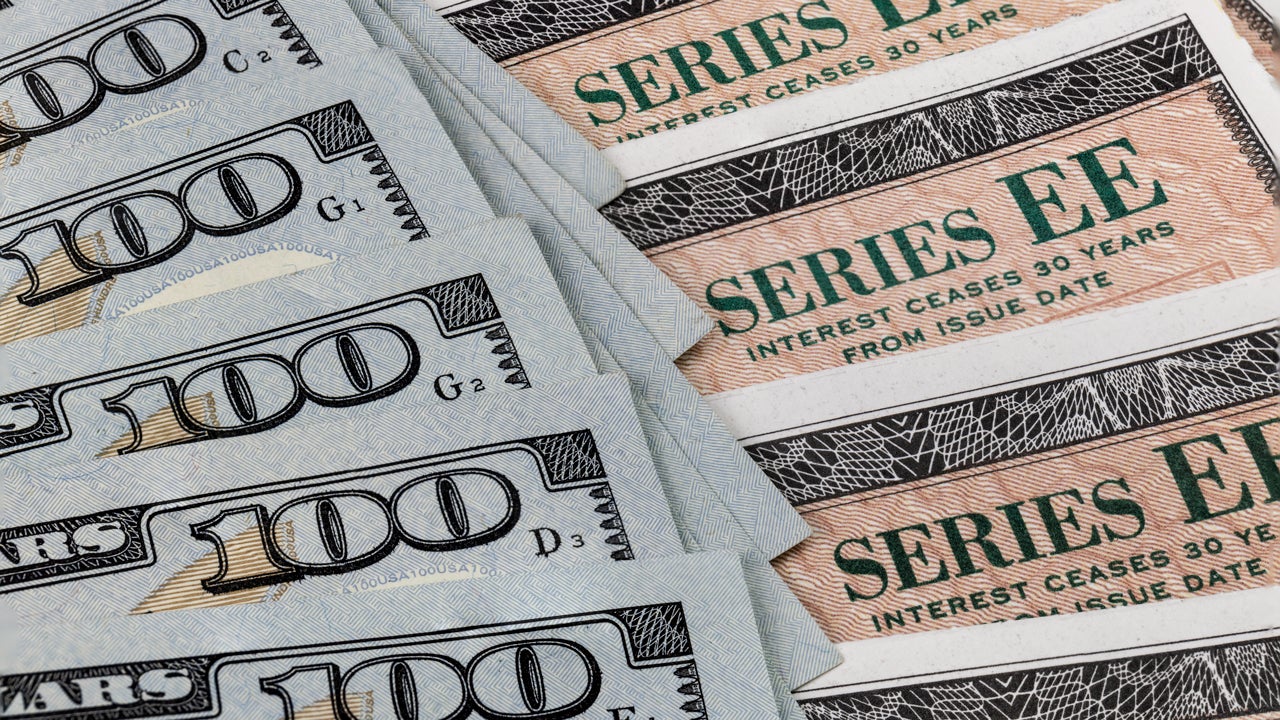The pros and cons of CD investing

Key takeaways
- CD investing offers a guaranteed return.
- When CDs are issued from federally insured banks and credit unions, your money is protected, up to a certain amount, should the financial institution fail.
- If you want access to your money right away or you only have a little bit of cash to get started, CD investing might not be right for you.
Certificates of deposit (CDs) are an attractive option for anyone looking to add some safety and predictability to their portfolio. They typically guarantee a fixed rate of return and don’t come with the same kinds of risks as other investments. But they’re not without their potential downsides, so it’s important to consider the pros and cons of CDs before committing your funds to them.
Pros of CD investing
1. Fixed, predictable returns
Unlike other types of deposit accounts or investments, savers can count on fixed-rate CDs to deliver a specific yield for a specific time.
Even if interest rates fall precipitously in the broader economy, a fixed-rate CD, opened at a time when rates were high, will provide the same annual percentage yield (APY) for the full term of the CD. That guaranteed rate of return makes it easy to do the math and calculate how much interest you could earn through the end of your term, which can be helpful when you’re planning possible uses for the money at that time.
2. Safety
CDs from federally insured banks and credit unions are backed by the full faith and credit of the U.S. government up to $250,000 per depositor, per insured bank/credit union, per ownership category.
“The return of your money is just as — if not more — important than the return on your money,” says certified financial planner Buz Livingston of Livingston Financial Planning in Santa Rosa Beach, Florida.
According to the Federal Deposit Insurance Corporation (FDIC), the independent government agency that protects funds deposited in banks, no one has ever lost a single cent invested in CDs it backs. Even if a financial institution is forced to close its doors, your money is safe up to the insured limit.
Credit unions often call their version of CDs share certificates. When share certificates are issued from a federally-insured credit union, your money is protected up to $250,000 per depositor, per ownership category by the National Credit Union Share Insurance Fund.
3. Better yields than savings deposits
Because CD account holders can’t take their money back at a moment’s notice like savings accounts holders can (at least, not without paying a penalty), CDs are more valuable to banks than savings deposits. Banks sometimes pay CD investors a higher yield in exchange for locking up their money for a set term.
Right now, the best one-year CD pays slightly less than the best high-yield savings account, so locking in a competitive rate with a CD could be beneficial if you don’t want to worry about potential APY drops in a savings account.
4. Wide selection of terms
CDs are available in an assortment of terms and yields from thousands of banks and credit unions. You can find CDs with terms typically ranging from three months to five years, though some as short as one month and others as long as 10 years. This diverse set of options helps investors find a CD that fits their needs.
In recent years, top CD APYs peaked near the end of 2023, but you can still find CDs that earn competitive rates. Savers who invest in CDs now, especially by building a CD ladder, can take advantage of such high yields — which could prove beneficial should rates on new CDs continue to decline.
5. Laddering opportunities
A CD ladder is when you open many CDs at once with different maturity rates. With a CD ladder, you can take advantage of current higher rates on shorter-term CDs while having some funds earn predictable rates for longer terms. Another advantage of a CD ladder is some of your funds will be freed up relatively soon, making them more accessible than if all the money were kept in a longer-term CD.
For instance, if you have $5,000, you can put $1,000 into each of the following:
Then, when the CDs mature, you can reinvest those funds into a new CD. You don’t have to put equal amounts into each account. You can also divide up CDs at different financial institutions based on the ones that give you the highest APY.
6. Wide selection of account options
Investors interested in CDs also have unique CD options. Some banks offer no-penalty CDs (also known as liquid CDs), which are ideal for savers who want to snag a decent interest rate with the option to withdraw the funds — if needed — without incurring an early withdrawal penalty.
Some banks also offer step-up CDs and bump-up CDs, which allow for rate increases during their terms. There are also add-on CDs, which allow you to make further deposits after opening the account.
Cons of CD investing
1. Early withdrawal penalty
One major drawback of a CD is that you can’t easily access your money if an unanticipated need arises. You’ll typically have to pay a penalty for withdrawing before the term is up, which can eat into interest and even result in the loss of principal.
“During times of uncertainty, liquidity is often paramount. This liquidity could be used for buying opportunities in a distressed market, or could even be essential for covering spending needs so that other long-term investments don’t need to be sold,” says Alex Reffett, principal and co-founder of East Paces Group in Atlanta.
Though buying a CD is a good way to earn interest on cash that might otherwise be stagnant, you need to weigh CD yields and terms against a potential need for liquidity. This is where a CD ladder can come in handy if you want to benefit from guaranteed rates but wish to free up some of their funds relatively soon.
2. Interest rate risk
The “gamble” you take when investing in a fixed-rate CD is whether or not you’re investing at a good time. If APYs fall after you open a CD, you’ll be riding high with a great APY for years. If they go up though, it means you’re losing out on earning higher rates.
For this reason, it’s important to consider the direction rates may be headed before committing money to a CD.
A look at historical CD interest rates over the past 30 years shows they have had their ups and downs. In the mid-1980s, five-year CDs boasted yields exceeding 11 percent. More recently, rates were trending mostly downward, falling to very low levels during the COVID-19 pandemic. But, the Federal Reserve raised rates aggressively between 2022 and 2023, causing rates on competitive CDs to increase considerably.
CD rates can vary a great deal among banks, so it pays for investors to shop around.
3. Comparatively low returns
Though the yields tied to CDs are often more favorable than they are for other more liquid bank accounts, returns are typically lower than they are for higher-risk asset classes such as stocks and exchange traded funds (ETFs). This presents a problem of opportunity risk.
“If something comes along that offers a real opportunity to grow your money and your money is tied up in a CD, then you lose,” says Lamar Brabham, chief executive officer and founder of the Noel Taylor Agency in North Myrtle Beach, South Carolina. “Safety alone is not the only thing to take into consideration.”
4. Inflation risk
Locking your money in fixed-rate CDs also carries the danger that your money could lose its purchasing power over time if your interest gains are overtaken by inflation.
The Consumer Price Index (CPI), a measure of inflation, is currently down significantly after having peaked in June 2022. Right now, it’s not difficult to find a fixed-rate CD with an APY above the rate of inflation. However, if inflation were to increase over time, money locked in a CD that’s earning a rate lower than inflation would be losing purchasing power.
5. Risk of missing the maturity date
If you do nothing when your CD’s term ends, your bank may renew the CD automatically at the same term or a similar one. There’s a chance the new APY will be lower than you’d like, and taking the money out of this new CD before it matures would likely result in an early withdrawal penalty.
As such, when investing in CDs, it’s important to keep track of their maturity dates. This ensures you’ll be able to make an informed decision near the end of the CD’s term about whether to renew the CD, open a brand new CD or invest the funds elsewhere.
When is investing in a CD a good idea?
A federally insured, fixed-rate CD can be a good investment under the right circumstances, such as:
- When you’re seeking a low-risk option for earning a guaranteed rate of return
- When you can afford to part with the funds for the duration of the term, which includes already having an adequate emergency fund
- When a CD’s APY is outpacing the rate of inflation
- When rates on deposit accounts — such as savings accounts and new CDs — are likely to drop during the CD’s term
Should you get a CD in 2025?
It’s certainly worth considering adding a CD to your savings portfolio, especially if you feel uncertain about investing in the stock market or any future market turbulence. While competitive CD rates have been declining for months, it’s still possible to find CDs that lock in APYs similar to those of high-yield savings accounts.
Rates of return on many CDs tend to move in lockstep with changes to the federal funds rate, so it remains to be seen whether CD APYs will continue to drop in 2025, and by how much. Locking in a fixed-rate now, however, could be beneficial should rates on new CDs decrease any further.
Bottom line
Factor in the pros and cons of CDs if you’re looking for a safe place to keep your money, and look at which institutions are offering the best CD rates.
Regardless of what’s happening in the U.S. economy, don’t be swayed by fear and anxiety when it comes to investing in CDs. Instead, consider your time horizon (how soon you’ll need the CD money) and your financial plans and goals before you determine whether a CD is right for you.
Why we ask for feedback Your feedback helps us improve our content and services. It takes less than a minute to complete.
Your responses are anonymous and will only be used for improving our website.







